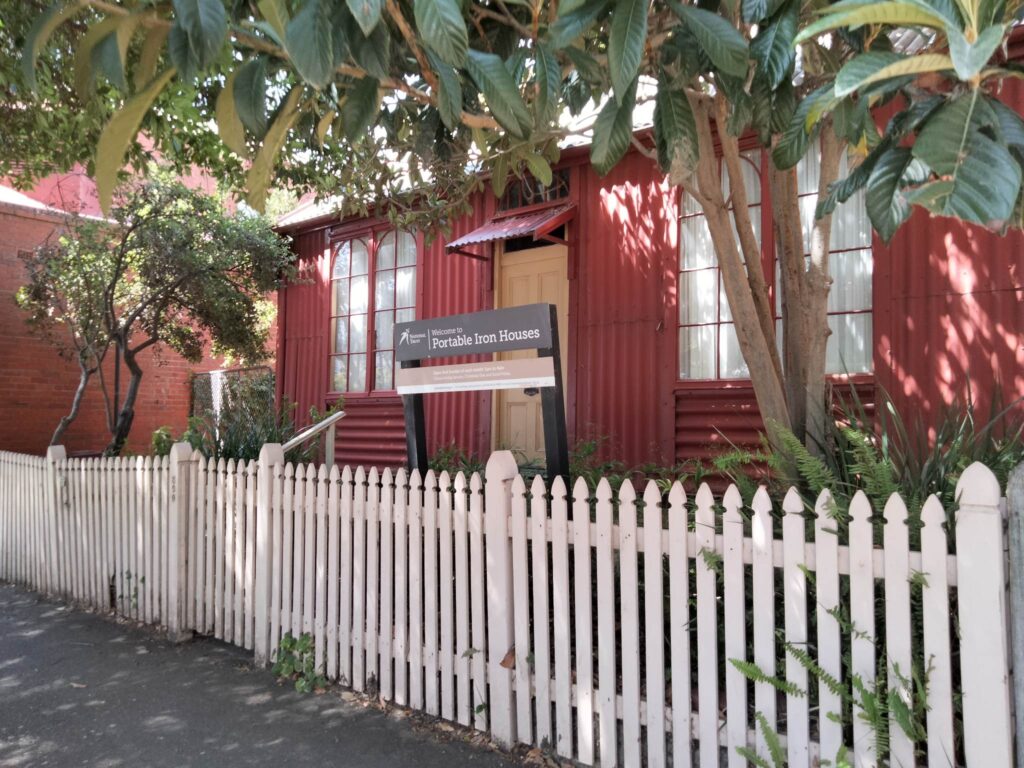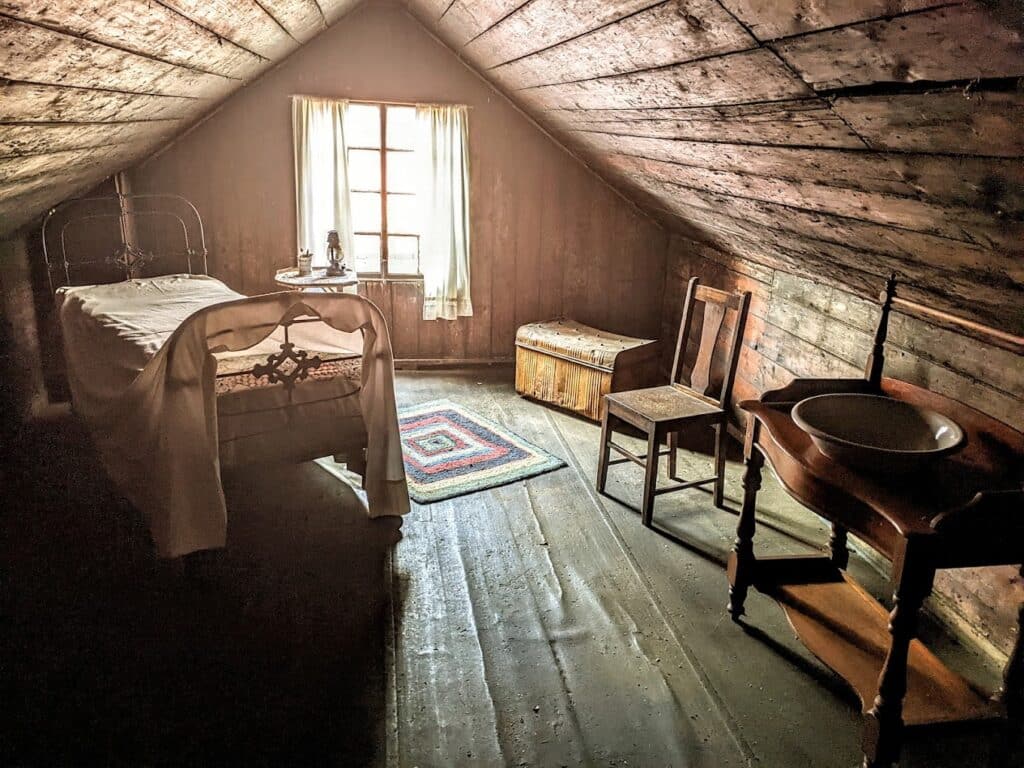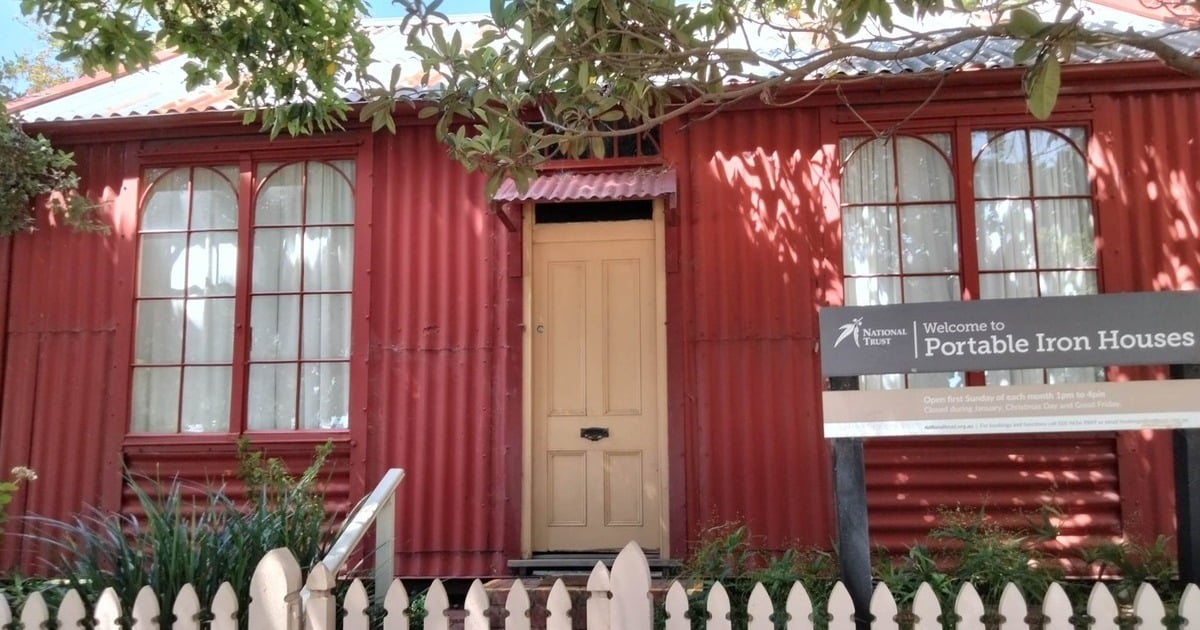In March 1850, William Campbell of Strathloddon found evidence of gold in Victoria. One year later, in January 1851, Campbell disclosed the find and the great Victorian Gold Rush began. All across the country, people flocked to the fields of Victoria. Animals were left unattended, drovers deserted their teams, merchants and lawyers rushed from their desks and entire ships’ crews, captains included, made their way south to make their fortune. As more and more migrants arrived housing became a peak issue. The answer? Portable iron houses.
A Basic History
These were the IKEA houses of their day. Ordered directly out of a catalogue they were bought, packed up and sent out on demand. The entire system was commissioned by Governor Latrobe (yes, the guy that university is named after) and under this revolutionary idea, nearly 100 such portable buildings were set up in South Melbourne within a period of five years.
By 1855, nearly 100 such portable buildings dotted South Melbourne, but today only three remain. These are Patterson House, which remains on its original site, Abercrombie House and Bellhouse. The latter two were relocated to the current sites from North Melbourne and Fitzroy in response to the ongoing development of property and the desire for preservation, and all are open for visitation today – and it’s well worth it. Aside from being a little piece of Melbourne’s history, these are some of the only surviving examples of buildings from this era in Australia and are certainly among the few remaining iron houses in the world.
What makes the Portable Iron Houses Unique?

But that’s the fun stuff you can get from any website that talks about the Iron Houses, so let’s talk about something unique. First, small homes like the three that have survived were not the only type of building on offer. The catalogue sported a range of buildings from modest cottages to full on theatres and even churches that could hold over 700 people – at one point even two-storey buildings and a coach house dotted south Melbourne all sourced from this catalogue. Most of the buildings were hand-built by the people who lived in them and came with clear instruction manuals for their construction – much like flat-pack furniture today. One of the surviving models, specifically Bellhouse at Balmoral, was at one point examined by and customised by Prince Albert – Consort to Queen Victoria – who decided to order the model in order to transform it into a ballroom. Prince Albert was apparently quite enthusiastic about prefabricated houses, appearing many times throughout the 1851 edition of The Builder magazine – where this story about the Bellhouse makes its first appearance! In fact, so connected was Prince Albert to these houses that they are often referred to as ‘Prince Albert’s Model Houses’. Prince Albert had considerable interest in improved housing for the poor, and was president of the Society for Improving the Conditions of the Labouring Classes (SICLC). In a very direct way, the establishing of migrant housing in response to the gold rush was a direct outcome of his tireless support for this enterprise.

The Downsides
Despite all this, they had their drawbacks. Originally designed for English weather, they were hot and uncomfortable in the Australian heat and were replaced with better-insulated ones with local materials quite quickly. A single six-roomed house was valued at £60 (around $8100 today) with smaller houses two to three-room houses valued closer to £30 ($4000 modern) which sounds quite cheap but was easily more than the annual salary for most workers – for comparison a servant’s wage in this era was £16 annually, and many high paying jobs capped out at around £40 a year. Between the cost and the discomfort, it should suffice to say that there’s a reason only around a hundred actually got built.
The Houses Today
These three surviving houses, Patterson, Abercrombie and Bellhouse, can be visited on the first Sunday of every month where you can experience for yourself that little slice of history. And if you’re interested in these three iron houses, consider taking a look at one other surviving iron home from the 1850s located on the other side of the city. Like the others, Walmsley House comes from the Gold Rush era, but it has a unique history of its own. Beginning as a barracks for mounted troopers, it eventually transitioned into the home of the park keepers, and eventually into an attraction and historic landmark in its own right. Read more about that here.
~
As one of the best blogs dedicated to everything South Melbourne, Durham House is your one-stop shop for info on what’s happening in this vibrant and beloved suburb and its surrounds. So, whether it’s info on South Melbourne Market or the history of South Melbourne Town Hall, Durham House has you covered.





